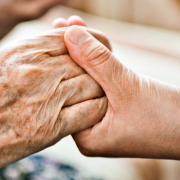What Causes Parkinson’s Disease? Many Answers
What Causes Parkinson’s Disease?
A Shortage of Dopamine
Parkinson’s disease occurs when nerve cells, or neurons, in an area of the brain that controls movement become impaired and/or die. Normally, these neurons produce an important brain chemical known as dopamine, but when the neurons die or become impaired, they produce less dopamine. This shortage of dopamine causes the movement problems of people with Parkinson’s.
Dopamine is a chemical messenger, or neurotransmitter. Dopamine is responsible for transmitting signals between the substantia nigra and multiple brain regions. The connection between the substantia nigra and the corpus striatum is critical to produce smooth, purposeful movement. Loss of dopamine in this circuit results in abnormal nerve-firing patterns within the brain that cause impaired movement.
Loss of Norepinephrine
People with Parkinson’s also have loss of the nerve endings that produce the neurotransmitter norepinephrine. Norepinephrine, which is closely related to dopamine, is the main chemical messenger of the sympathetic nervous system. The sympathetic nervous system controls many automatic functions of the body, such as heart rate and blood pressure. The loss of norepinephrine might help explain several of the non-movement features of Parkinson’s, such as fatigue, irregular blood pressure, decreased gastric motility or movement of food through the digestive tract, and postural hypotension. Postural hypotension is a sudden drop in blood pressure when a person stands up from a sitting or lying-down position. It may cause dizziness, lightheadedness, and in some cases, loss of balance or fainting.
Genetic Mutations
Although some cases of Parkinson’s appear to be hereditary, and a few can be traced to specific genetic mutations, most cases are sporadic. Sporadic means the disease occurs randomly and does not seem to run in families. Many researchers now believe that Parkinson’s disease results from a combination of genetic and environmental factors.


